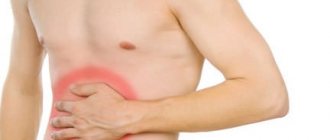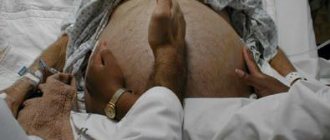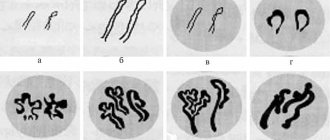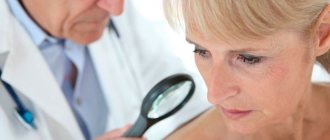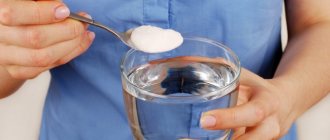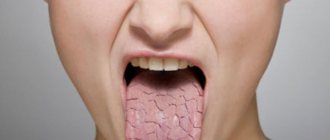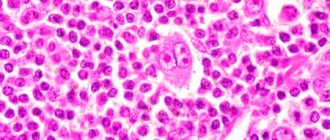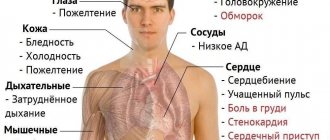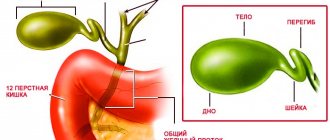Gastroptosis is a prolapse of the stomach, one of the serious diseases that leads to complications not only of digestion, but also of many other functions of the body.
Gastroptosis can be congenital or acquired. Congenital gastroptosis occurs in asthenics, that is, people with the “Wind” constitution. Acquired gastroptosis occurs in people with the “Mucus” and “Bile” constitution. Gastroptosis is a very serious disease and is characterized by seven digestive disorders (belching, bad breath, diarrhea, constipation, heaviness in the stomach after eating, heartburn). Some doctors advise people with gastroptosis to lie down for a while after eating, but we, doctors of Tibetan medicine, do not advise this, because We know how to treat this disease.
Gastroptosis is most often diagnosed, of course, in clinics using x-rays of the stomach with a contrast agent. At the Naran clinic, any doctor can determine gastroptosis using tapping and a phonendoscope, and the appearance and complaints of the patient can tell about his condition.
ETIOLOGY
There are various factors for the appearance of this pathology:
- Special physique (tall, elongated all parts of the body, weak muscles and narrow chest);
- Lengthening of the mesentery of the large intestine and its subsequent prolapse;
- Congenital disorders of the ligamentous apparatus;
- Bend of the proximal part of the duodenum;
- Sharp weight loss;
- Surgeries to remove benign or malignant stomach tumors;
- Poor nutrition;
- Vitamin deficiency (protein);
- Abdominal distension during childbirth (the risk of disease occurs in the postpartum period);
- Previously suffered serious illnesses that led to significant depletion of the body.
An equally important risk of gastroptosis is the condition of the patient's diaphragm. When the lungs are damaged (tumors, cysts, massive pleurisy) or when the muscles of the diaphragm are weak, its prolapse occurs, which entails the prolapse of other organs, including the stomach.
Heavy physical activity can also lead to this disease.
Possible complications and consequences
The prognosis is favorable with timely intervention by doctors. Lack of treatment leads to an impact on the intestines, which shift and begin to put pressure on the uterus and ovaries in women, and in men on the prostate gland (a special case). As a result, symptoms arise that complicate the overall picture of the disease.
In addition, gastroptosis can lead to the following consequences:
- weakened gastric motility;
- deterioration of the secretory function of the organ;
- development of malignant tumors;
- slowing down the movement of food from the esophagus to the intestines.
Advanced gastroptosis may be a harbinger of stomach cancer
PATHOGENESIS
Gastroptosis occurs due to various disorders in the patient’s body, which determine the type of disease - congenital or acquired gastroptosis. Congenital gastroptosis is very often observed in patients with asthenic syndrome. Acquired gastroptosis can appear most often as a result of sudden weight loss, in the postpartum period, after abdominal surgery.
With this disease, the ligamentous apparatus responsible for fixing the position of the stomach is stretched inside the abdominal cavity. Most often you can find anthropopyroptosis in combination with elongation and hypotension of the stomach. Total gastroptosis is observed only with simultaneous prolapse of both the diaphragm and the stomach.
CLASSIFICATION
Experts, depending on the origin, distinguish two types of gastroptosis of the stomach:
- Congenital or constitutional;
- Acquired.
Symptoms and treatment of the disease depend on the degree of reduction of the organ inside the abdominal cavity. There are three stages:
- Stage 1 – the initial stage, which is characterized by the location of the lesser curvature of the stomach approximately three centimeters above the line of the gallbladder;
- Stage 2 – differs in that the lesser curvature of the stomach is located along the line of the gallbladder;
- Stage 3 – determined by a very low position of the fundus of the stomach relative to the gallbladder.
SYMPTOMS
Experts identify groups of symptoms depending on the stage of the disease.
As a rule, patients with the first and second stages do not notice any disorders or ignore them due to their low severity. The first to be distinguished are:
- Minor pain in the abdominal cavity, usually occurring after eating;
- Mild attacks of nausea;
- General malaise.
At the third stage, the symptoms become more pronounced, and ignoring them can lead to serious consequences. At this stage, experts highlight:
- Severe nagging, sharp or paroxysmal pain in the stomach area. In a vertical position of the body, the pain increases, in a horizontal position it disappears;
- Reflection of stomach pain in the lumbar area or in the heart;
- Change in skin color at the site of any mild irritation. Most often occurs on the arms and legs;
- Attack of nausea and vomiting;
- Increased level of gas formation;
- Rumbling in the stomach;
- Belching;
- Enlarged and saggy abdomen;
- Frequent urination;
- Attacks of constipation;
- Heavy sweating;
- Dairy intolerance;
- Addiction to spicy foods and spices;
- Increased irritability;
- Low performance and fatigue;
- Decreased appetite;
- Dizziness.
All of the above symptoms can occur in other diseases. Therefore, in order to accurately determine the cause of ailments and prevent complications in advance, it is important to visit a gastroenterologist as early as possible and conduct a comprehensive examination.
Treatment methods
Drug therapy
At stages 1 and 2 of gastroptosis, medications are not actively used. However, to eliminate symptoms, the following remedies are prescribed:
- Mezim - eliminates heaviness in the stomach after eating;
- Rennie or Maalox - helps with heartburn;
- Motilium - prevents vomiting and relieves nausea.
Self-administration of medications is not recommended. Drug therapy is prescribed exclusively by a doctor.
At stage 3 of gastroptosis, complications often arise - prolapse of the liver, kidneys or gastritis. The following medications may be required:
- Bisacodyl and Smecta - eliminate diarrhea;
- Methandrostenolone is a drug from the group of anabolic steroids that strengthens the body;
- Drotaverine and No-shpa are antispasmodic agents that eliminate painful sensations;
- Papaverine - stimulates gastric secretion;
- Senade is a laxative and relieves constipation;
- Persen is a sedative used for neuroses.
Diet
For gastroptosis, adhere to the following recommendations:
- eat at the same time and at regular intervals - 3-4 hours;
- adjust their diet - eat foods that are digested quickly;
- avoid overeating;
- chew food thoroughly;
- Salty and spicy foods are removed from the diet.
What foods are difficult for the body to digest? In addition to spicy and salty dishes, the following are excluded from the patient’s menu:
- highly sweet foods, especially chocolate, cakes and pastries;
- grilled meat;
- fat sour cream;
- coffee and cocoa;
- semolina;
- heavy cream;
- spices and hot vegetables: garlic, pepper;
- carbonated drinks;
- rice;
- sweet pastries and white bread;
- alcoholic products.
The patient is allowed the following foods and dishes:
- steamed meat and fish dishes (low-fat);
- fruits and raw vegetables;
- buckwheat and oatmeal porridge - cooked only in water;
- fermented milk products (low fat);
- compotes and juices;
- tea;
- cottage cheese.
Approved products - gallery
Fruits are a storehouse of vitamins and a source of good mood
Compote of berries and fruits is rich in vitamins
Oatmeal cooked in water is the basis of nutrition for a patient with gastroptosis
Fermented milk products are healthy, but during gastroptosis only low-fat products are consumed
Massage
Massage is an effective way to treat gastroptosis. The technique is suitable for men and women, adults and children. However, there are contraindications:
- hernia;
- diseases of the gastrointestinal tract, during which there is a high probability of bleeding;
- chronic appendicitis, which often worsens;
- the presence of a tumor in the chest, pelvic or abdominal cavity;
- inflammation in the acute stage of development;
- development of tuberculosis of the intestines and peritoneum;
- exacerbation of cholelithiasis;
- pregnancy.
To perform a massage, you need to know the exact boundaries of the stomach. Some tips will help with this:
- along the left nipple line, the bottom of the organ is located at the level of the fifth rib;
- the exit is at the level of the eighth rib on the right side of the body, and the entrance to the stomach is at the level of the eleventh vertebra;
- the location of the lower border depends on gender: in men it is 3–4 cm above the navel, and in women it is 1–2 cm.
Therapy is carried out regularly for 10 days. The duration of one session is no more than 15 minutes. During the procedure, the patient lies on his left side and bends his legs at the knee joint. The massage techniques are as follows:
- fast and jerky movements - puncturing;
- intermittent vibration;
- organ concussion.
With the help of self-massage, you can influence the stomach on your own. Before using the technique, it is recommended to consult a doctor and get recommendations. Self-massage is performed on an empty stomach, about 30 minutes before meals.
Self-massage of internal organs - video
Physiotherapy
Physiotherapy methods perfectly complement the main methods of treatment. Patients are recommended to use a wide belt or a special bandage - they are necessary to straighten the lower back and support the anterior abdominal wall.
The displacement of the stomach from its “rightful” place in itself does not imply the use of physiotherapeutic procedures (electrotherapy, EHF). Physical exercise, proper nutrition, a healthy lifestyle and a rational daily routine will help return the organ to its anatomically correct position.
Physiotherapy
Choosing exercises is a responsible matter. You need to select suitable elements that will be effective and will not cause harm. The doctor must take into account the characteristics of the patient’s body and the stage of the pathological process.
To treat grade 1 or 2 gastroptosis, you can perform the following set of exercises:
- Bend your legs at the knee joint, then raise your pelvis, while leaning on your elbows, feet and the back of your head.
- Stretch your arms along your body, straighten your legs. As you inhale, raise your arms, stretch, and place your hands behind your head. As you exhale, return to the original position.
- Lie on your back, stretch your arms along your body. Perform alternate leg lifts.
- Lie on your back, place one hand on your stomach and the other on your chest. Take a deep breath, while drawing in your abdominal muscles. Then exhale slowly.
- Raise your legs and bend your knees, then perform circular movements, imitating riding a bicycle.
- While inhaling, bend your left leg at the knee joint. As you exhale, press it to your chest and then lower it. Repeat a similar exercise for the right leg.
The duration of gymnastics is determined by the doctor. In most cases, the exercises are repeated 10 times. After therapy, lie on your back and rest for at least 20 minutes.
Exercises for prolapse of internal organs - video
Folk recipes
During the development of gastroptosis, patients often lose their appetite. Tinctures prepared from the following plants will help correct the situation:
- chicory;
- dandelion roots;
- marsh calamus;
- wormwood;
- yarrow;
- centaury.
- 1 tbsp. l. dry plant (any of the proposed ones) is poured with a glass of boiling water.
- The medicine is infused for 30 minutes and filtered.
- Take 1 tbsp. l. 30 minutes before meals.
To normalize the production of gastric juice, a decoction of plantain is suitable:
- 3 tbsp. l. dry plantain or several fresh leaves pour 0.5 boiling water.
- The medicine is infused for 10 minutes and consumed half a glass 30 minutes before meals.
Another remedy is cabbage decoction. The vegetable (1 medium-sized head) is chopped, then boiled for 5 minutes over medium heat. The decoction is used instead of tea.
Green tea relieves nausea well, but this drink is contraindicated in patients prone to hypertension and tachycardia.
Alternative medicine - gallery
Plantain decoction normalizes the production of gastric juice
Cabbage decoction can be used as a main drink
Green tea relieves the patient from nausea and vomiting
Chicory tincture improves well-being and appetite
DIAGNOSTICS
A variety of diagnostic methods are used to identify gastroptosis.
- Consultation and diagnosis of external signs. The specialist focuses on the patient’s appearance, his complaints and performs palpation. Palpation can reveal a displacement of the borders of the stomach, its location relative to other organs.
- Esophagogastroduodenoscopy (EGDS). This diagnosis reveals expansion of the stomach cavity and decreased peristalsis.
- X-ray of the stomach with contrast. It best allows a specialist to make an accurate diagnosis. With this examination, it is possible to record indicators of expansion and lengthening of the stomach, the level of its position, and decreased motility.
- Electrogastrography (EGG). Allows you to determine and confirm gastric hypotension.
- Ultrasound of the abdominal organs. It is necessary only when the patient shows signs of displacement of other organs.
TREATMENT
Today, the most effective treatment for gastroptosis is considered to be proper diet, maintaining a healthy physical shape and physical therapy, rather than surgery.
- Nutrition. You need to eat little and often, and after eating it is recommended to rest lying down for 1-1.5 hours. A nutritionist selects a therapeutic diet for the patient; the main task is to help restore body weight and provide a sufficient amount of nutrients, vitamins and microelements. To prevent the disease, it is important to adhere to these recommendations in the future.
- Physiotherapy. A competent physician-methodologist should lead the process of physical therapy. The main exercises are done lying down and with raised legs, since it is in this position that the stomach takes its correct position. Such gymnastics is aimed at strengthening the abdominal muscles and the body as a whole. It is important to do gymnastics daily. Bed rest and insufficient activity are contraindicated in a patient with gastroptosis.
- Massage. Massage is also of great importance for the successful recovery of the patient. Initially it is performed by a specialist, later - independently. The massage involves massaging the abdomen in a circular motion for several minutes.
- Symptomatic treatment. It is based on the treatment of individual symptomatic manifestations of gastroptosis and is largely aimed at restoring the functions of the digestive tract. These could be laxatives, fiber, herbs.
It is important to remember that with gastroptosis, increased loads and heavy lifting are prohibited.
To treat gastroptosis we use:
- acupuncture to improve trophism, relax muscles, relieve inflammation;
- energetic deep acupressure eliminates stagnation, improves blood circulation, calms the nerves well, if used on the stomach, then, naturally, the position of the internal organs improves, all functions are restored;
- moxotherapy - warming with wormwood cigars, expels cold, eliminates energy blocks, tones and soothes; wormwood cigars of the Naranfito brand, specially developed according to the original recipe, are suitable for this procedure. Very useful for the constitution Mucus and Wind;
- vacuum therapy - cupping can draw out cold, improve blood circulation and energy;
- stone therapy - warms, expels cold, relaxes, relieves pain.
To prevent gastroptosis, we advise you not to overeat, not lift weights, do gymnastics, monitor your stomach condition, and contact us at the Naran clinic. Those people who are treated with us usually twice a year, after gastroptosis is discovered in them, come to us for prophylaxis after treatment, and their quality of life improves. Toll free: 8 800 555 4200
